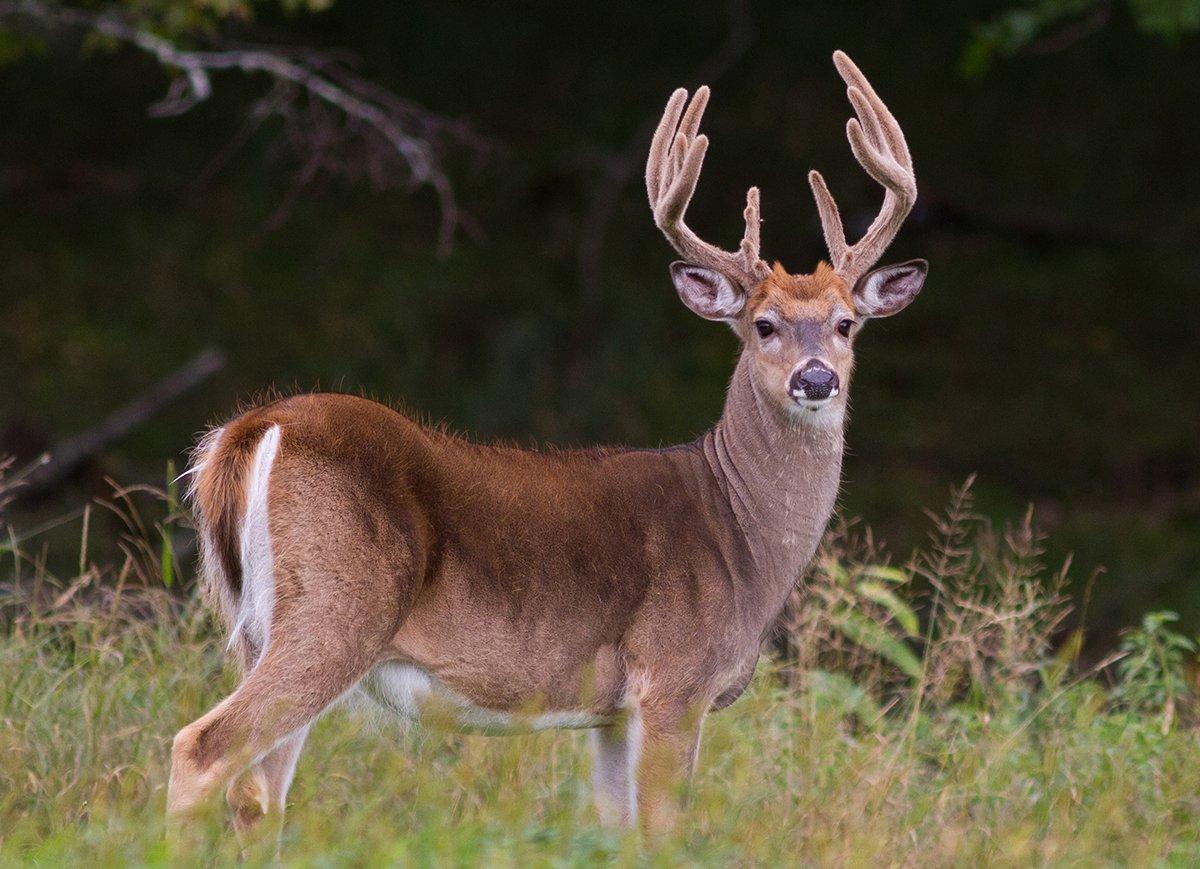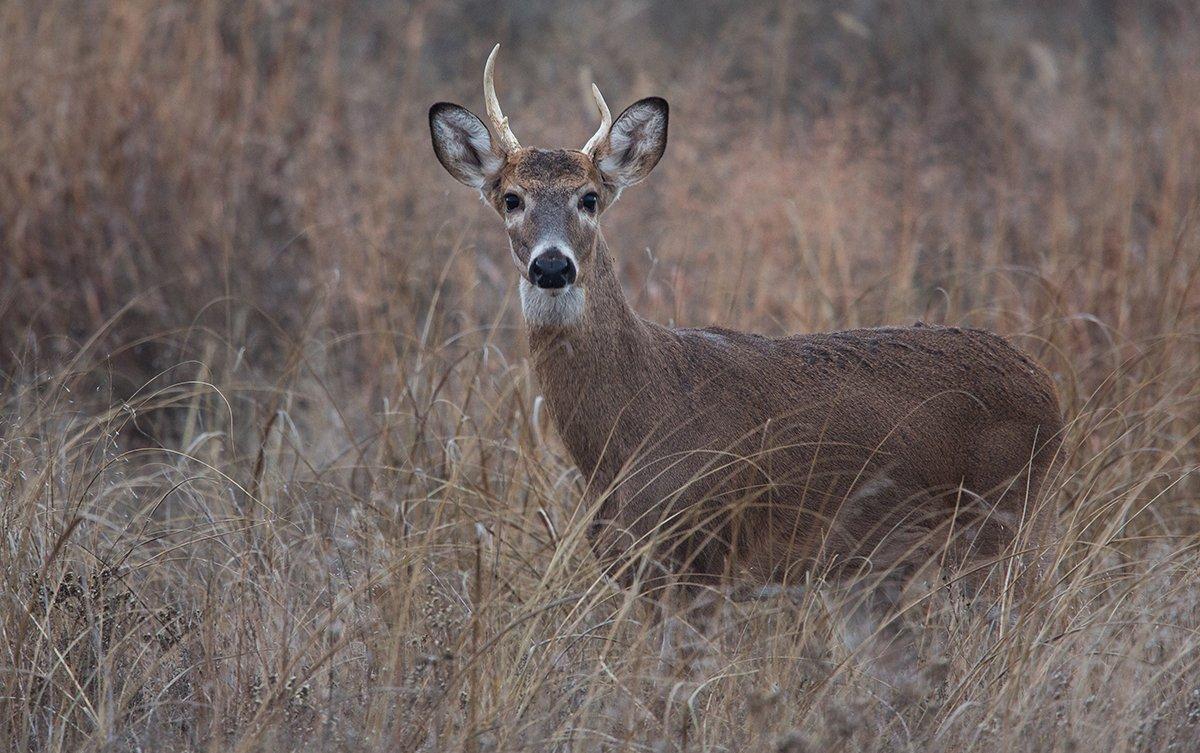It's a hard decision to make, but one well worth it if a truly big deer is your goal
We always emphasize the importance of providing optimum nutrition so deer can reach their genetic potential, but there is also another side to deer management. What you shoot and what you pass up has a big effect on future hunting, and once you start experimenting in this regard, you will face a big dilemma: which bucks do I shoot, and which ones do I let go? Most hunters make that decision based on antler size. I think there is a better way.
When you start making management decisions based on age rather than rack size, you open up the possibility for an interesting dilemma. What if you have a chance to shoot a dandy buck that is genetically superior but obviously still young? Sounds simple enough on paper - you pass him up. But, in the real world it can be a lot tougher. A trophy buck is still a trophy buck even if he is only 3 ½ years old. Many hunters mash the trigger before they even consider how old the deer is. Believe me, I know from experience. I've done it.
The Toughest Decision
There is one area I hunt where the neighboring landowners have all decided to work together to let young bucks walk. In this setting, it is not only encouraged that you pass up small bucks, it is expected. The properties are not high fenced, so there is always a real possibility that when you pass up a nice buck, he will jump the fence and test someone else's willpower and judgment. Also, your idea of young might not match that of your neighbor, and boom, he's dead.
Two occasions stand out in my memory. Both bucks were 3 ½ years old and both were already exceptional deer. The first was a 6-by-5 that gross scored 160ish. That's a shooter everywhere I hunt, but because he was young, I decided to grudgingly let him go to see just how big he might become. As I watched him pass under my stand at 8 yards and cross a small clover field behind me, I knew he would someday be a true monster. I hoped I might see him again.
I saw him again two weeks later in a photo as he lay in the back of a pickup truck. I didn't have the heart to tell the excited bowhunter I'd passed up the buck. I could only swallow hard and shake his hand. This was a genetically superior buck and there was no doubt he was destined to gross in the 180s the next season. Bucks like that don't come around very often, so it is a shame when this rare potential goes unrealized.
The other young stud that I passed up was equally difficult, but that episode had a much happier conclusion. This buck has become my poster child for managing by age.
Don't Miss: Crossbow Hunter Bags Gnarly Drop-Tine Buck from Ground Blind
The Big Jump
In an interview I conducted with renowned deer researcher Dr. Grant Woods, he confirmed my theory. Bucks make a significant change in two categories from age 3 ½ to age 4 ½. Most bucks make their biggest jump in antler size during this year. Unfortunately, this growth spurt also coincides with a personality change that is just as dramatic. In human terms, they go from sexually charged, wild-eyed 18-year-olds to very isolated and cautious 45-year-olds in only one year. Both transitions can be shocking in their magnitude and frustrating in their outcomes.
After letting some 3 ½-year-old bucks go during the season, you expect to come back the next year and find them again as 4 ½-year-olds, but it doesn't always work that way. Whitetail bucks are not the same animal after they make this transition.
Don't Miss: A Birthday Buck with Multiple Beams
Managing for Older Bucks
Most hunters overuse antler score as the main reason to pull the trigger. In their view, when a buck's rack reaches a certain size, he becomes a shooter. In the process of shooting these deer, they also shoot some genetically superior young deer - future monsters - a year (or two) too soon. Maybe the focus should really be on age. When a buck reaches a certain age, he becomes a shooter. In an ideal world, the management goal should be to hold off shooting all bucks until they reach at least 4 ½ years old, if not older.
Superior 3 ½-year-old bucks are much more valuable than the average 3 ½-year-old. And because 3 ½-year-old bucks are definitely much easier to kill (where they exist) than 4 ½-plus-year-old bucks, the very deer (genetically gifted 3 ½-year-olds) that should get another year older are the ones most hunters target. Like I said, it is a dilemma.
Unfortunately, most of the world in which we hunt is not ideal and passing up a great 3 ½-year-old buck in the hopes of seeing him a year later (and a year bigger) is often tough and sometimes even foolish. That's a decision that only you and your hunting buddies can make. But, if you are in the right setting where most of the hunters are committed to growing whoppers, passing up these super young bucks is the most important single step you can take toward shooting a monster.
Don't Miss: How to Age Bucks on the Hoof














